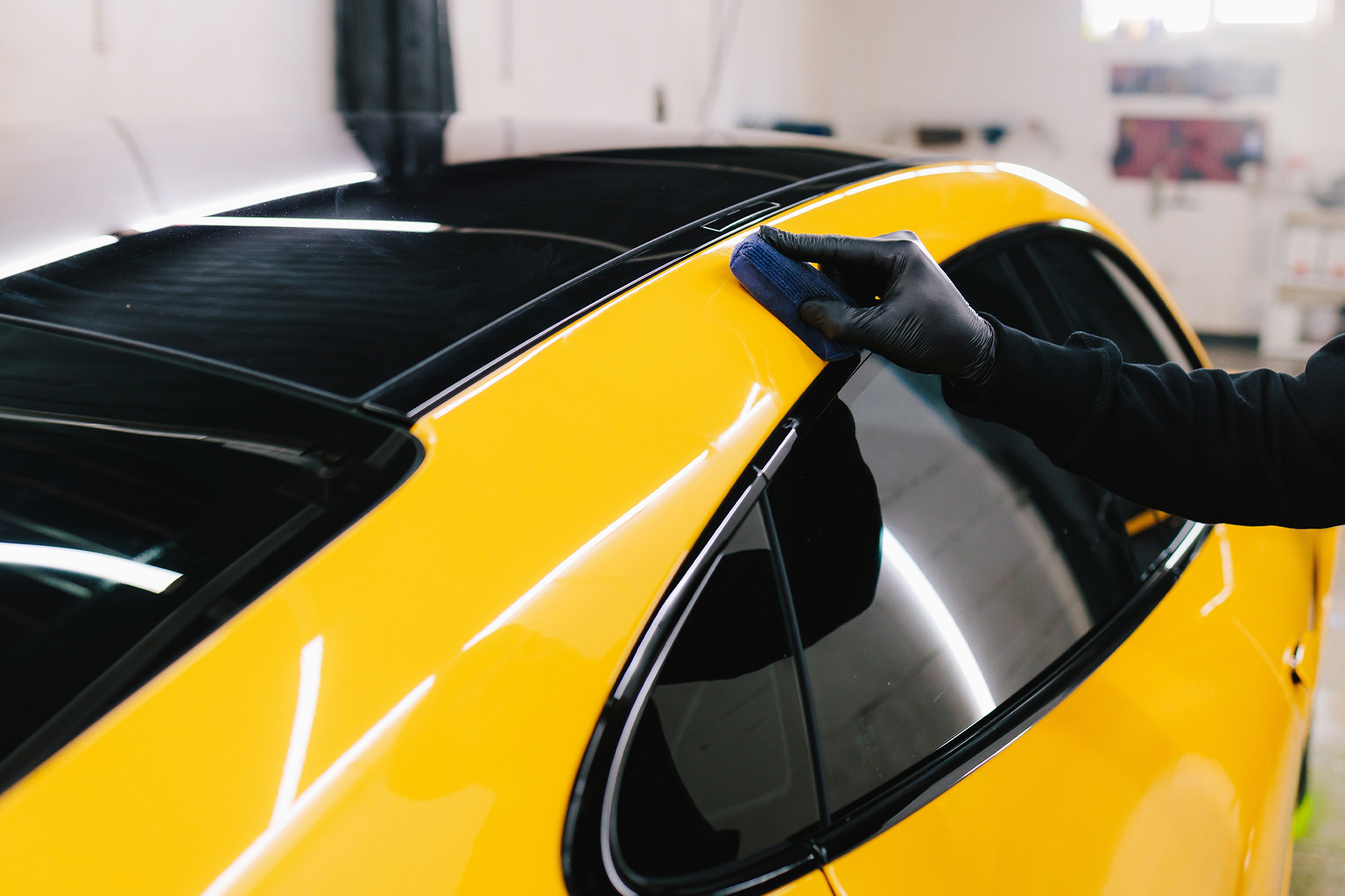
How to apply ceramic coating
Ceramic coating can be a valuable addition to a vehicle, but how is it applied? Can you do it yourself or should it be done professionally? What prep is needed and how good is it at protecting your vehicle’s paintwork?
The good news is that a quality installation can be carried out in around two days. After this, your vehicle will have a robust barrier against many of the environmental and physical risks of paintwork damage.
Read on to get the lowdown on all your questions about applying a ceramic coating.
How to Apply Ceramic Coating: frequently asked questions
- FAQ #1: when should ceramic coating be applied?
- FAQ #2: what prep is needed?
- FAQ #3: how to apply ceramic coating
- FAQ #4: DIY or professional installation?
FAQ #1: when should ceramic coating be applied?
While there’s no hard and fast answer to this, one thing is true. Ceramic coating should only be applied to a vehicle with paintwork that’s generally in good order. This could mean applying it to a new or nearly new car, after a respray has cured, or straight after a car wrap is installed.
FAQ #2: what prep is needed?
The prep is one of the most important aspects of applying a ceramic coating. This is because, once applied, ceramic coating magnifies the gleam and condition of the paintwork below. Any swirls or minor scratches that haven’t been corrected will become far more obvious.
The steps of preparation can be summarized as follows:
- Rinsing the vehicle
- A thorough wash with a quality shampoo to help remove all grime and road debris
- Carefully clay bar every inch of the paintwork, including all the nooks and crannies
- Correct any paintwork anomalies
- Wipe down the vehicle with a properly blended isopropyl alcohol spray
- Allow the vehicle to totally dry in a semi-sterile, temperature-controlled, indoor environment
The above steps will ensure the paintwork is squeaky clean and ready for the ceramic coating installation.
FAQ #3: how to apply ceramic coating
The product comes in a liquid format that you squeeze onto an application sponge bound with a suede cloth. Load the cloth with a few drops of the coating and swipe over the paintwork. You’ll need to add more drops every 2-3 swipes. Work in an easy-to-map pattern to ensure that you cover every inch of the paintwork.
It’s advisable to cover one panel at a time. Once done, allow it to sit for 1-5 minutes. The exact length of time will depend on the ambient temperature. At 50F, wait 4-5 minutes. At 60F, 2-3 minutes. And at 70F (the ideal installation temperature) wait for 1 minute.
Now, buff away any coating residue with a microfiber buffing cloth. You’ll know it’s ready to buff because the coating will begin to harden, and you’ll see a rainbow-like haze. This is called “flashing”, and the warmer the temperature, the faster it occurs.
Once the vehicle is completely coated and buffed, wait an hour or two. Then decide if a second application is needed. Allow the coating to cure for around 48 hours before taking the car outside.
FAQ #4: DIY or professional installation?
You can’t beat a professional installation. They’ll have the best products, the right environment, the right prepping tools, and will know how to correctly prepare the car for the ultimate result.
Of course, if you have the premises, know-how, equipment, and time, then you might want to consider giving it a go yourself.
Ready to Explore Ceramic Coating for your Car? Call Auto SuperShield Today
As discussed, DIY ceramic coating is a huge risk. The last thing anyone wants is to spend big bucks and end up with a substandard result. As professional ceramic coating installers, we can honestly say that the extra cost involved in allowing the experts to carry out the work is money well spent.
Of course, you might be thinking, “of course they’d say that”. But believe us when we say we’ve seen some true horror stories of people applying a ceramic coating without the correct preparation and doing it in semi-sterile conditions.
Sure, our ceramic coatings aren’t the cheapest on the market—and with good reason: because they’re the best!
Head across to https://www.autosupershield.com/ceramic-coating for an overview and call our team for a friendly chat.
Related Posts
How can we help you?
We have an incredibly quick turn around time and have staff ready to take your call!
Email us at your convenience.
We'd love to see your vehicle!
We have staff awaiting your call!







